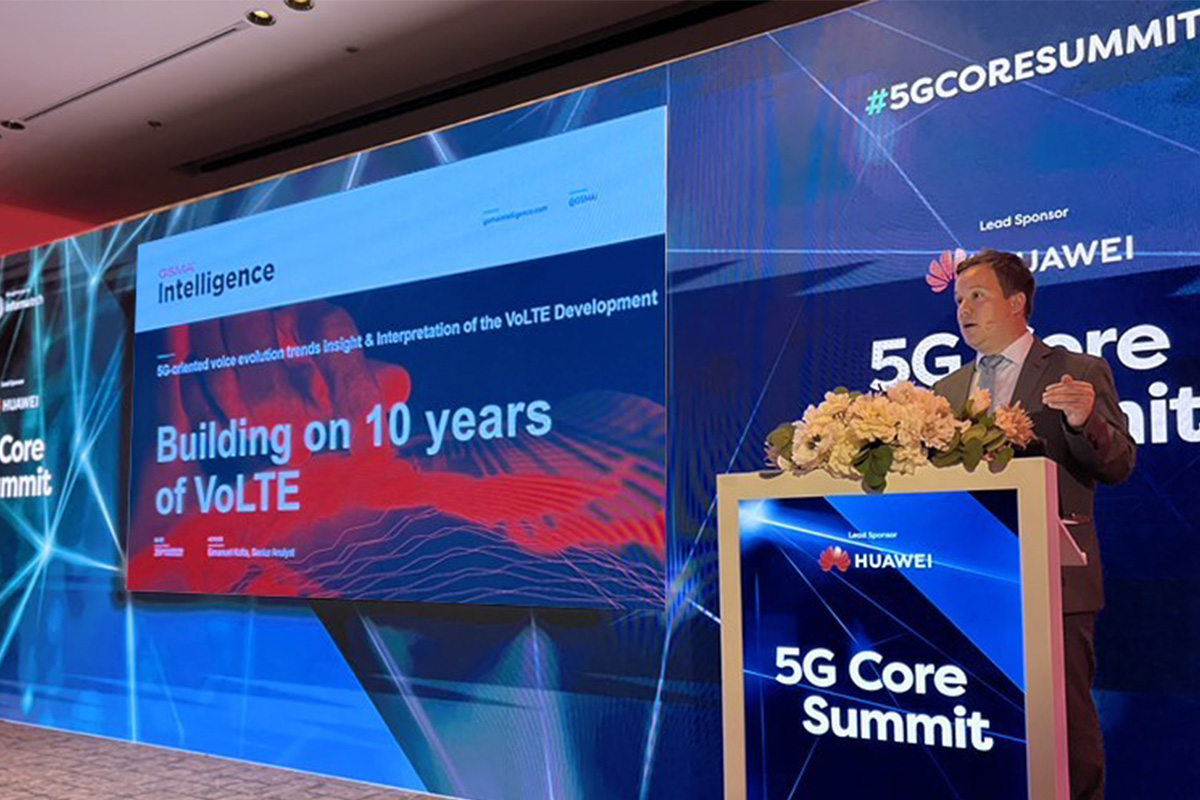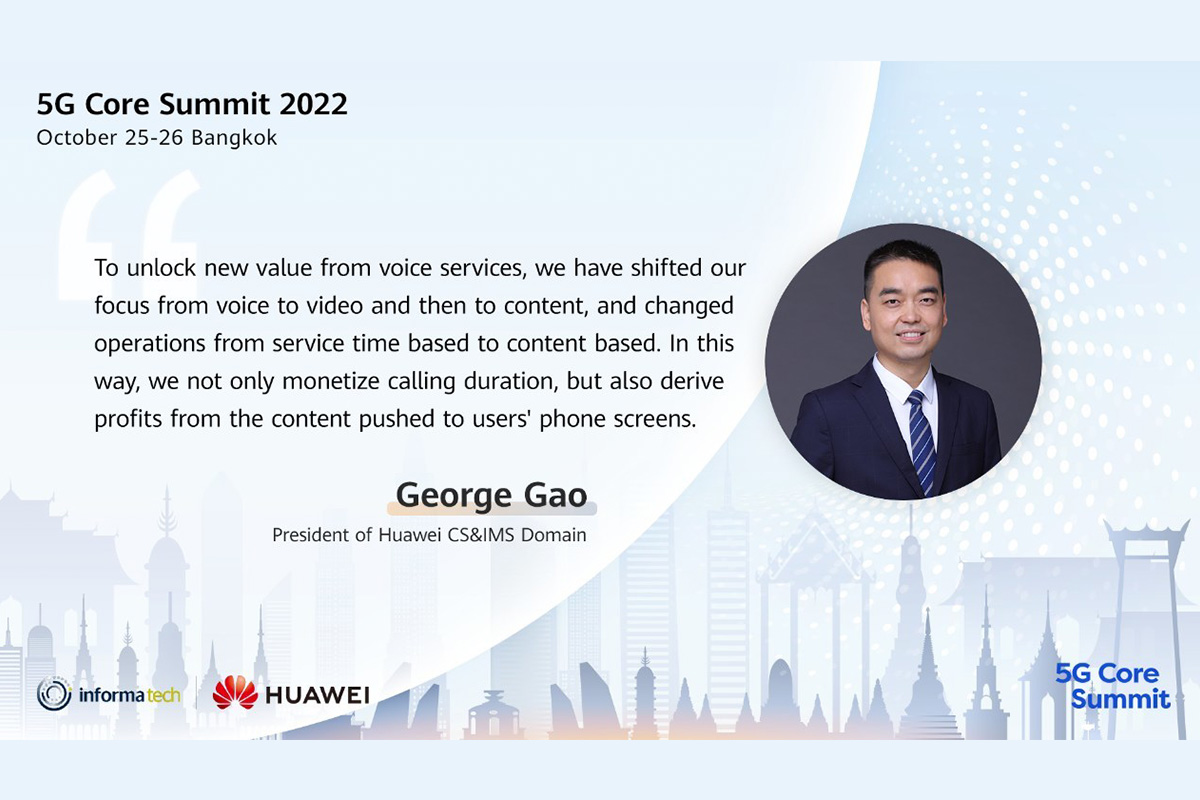Recently, 5G Core Summit 2022, hosted by Informa Tech and co-hosted by Huawei, was successfully held in Bangkok, Thailand. At the summit, Emanuel Kolta, Senior Analyst of Network Sustainability and Innovation, GSMA Intelligence, delivered a keynote speech titled Building on 10 Years of VoLTE. The speech elaborated on the present VoLTE development and analyzed both its driving forces and challenges. Emanuel Kolta stated that operators should embark on VoLTE deployment as early as possible to improve voice quality and develop new calling services, thereby maximizing network efficiency and creating more revenue.
Over the past decade, some operators have deployed all-IP VoLTE networks, upgraded the voice service quality, and improved network efficiency and cost-effectiveness. As 5G continues to command the telecommunications market and legacy 2G and 3G networks are gradually wound down, VoLTE has become a must-have for operators to provide standard calling services and is imperative to the commercialization of 5G SA.
Over the past ten years, operators deployed VoLTE to improve network efficiency; in the following decade, they will need to leverage VoLTE to commercialize 5G. With the ramp-up of 5G and phasing-out of 2G and 3G, calling services need to be migrated from the outdated CS devices to the IMS. The IMS is still the core network for implementing calling services in 5G because VoNR is also based on it. Considering this, operators should deploy VoLTE as early as possible to pave the way for the future network transition, in addition to protecting the voice service quality.
Just this month, GSMA Intelligence released a research report on VoLTE development – Building on 10 Years of VoLTE. This report provided a detailed analysis of the current status of global VoLTE construction and introduced successful practices. It also proposed to use VoLTE penetration to measure the development level of VoLTE. Operators in China, the Philippines, and Australia take the lead in terms of VoLTE penetration. According to GSMA Intelligence, by the end of 2022, global VoLTE penetration will reach 46%, and the number of VoLTE-capable terminals will increase significantly. By 2025, the number of global VoLTE and Vo5G connections will reach up to five billion, and VoLTE penetration will climb to 75%.
This report introduced the global VoLTE development process as a curve. According to the curve, the first batch of VoLTE networks were built from 2012 to 2015, which were mainly distributed in mature markets such as North America, Western Europe, and East Asia. The second wave of VoLTE construction occurred between 2015 and 2019. 2019 marked a significant turning point in the development of VoLTE, with most terminals, including iPhones, supporting VoLTE, and the network coverage and performance reaching a new level. By the end of 2022, all mainstream operators will use VoLTE to provide calling services.
After summarizing the successful experiences of global VoLTE deployment, this report pointed out that operators should commence VoLTE construction three years before the commercial use of 5G so that VoLTE penetration can be increased as high as possible to ensure service continuity and quality. In addition, VoLTE can help develop new enterprise calling services, such as HD video calling, video RBTs, and interactive calling, which will bring considerable revenue to operators.
This report noted that the network coverage, terminal, service quality, and roaming issues are the main constraints affecting VoLTE development. Although VoLTE is a mature technology, many terminals in developing regions do not originally support VoLTE, or VoLTE-capable terminals are costly, hindering the growth of the VoLTE user base. In the post-pandemic era, secure and high-quality calling services are more important than ever. According to GSMA Intelligence, 37% of operators do not sign any VoLTE roaming agreements. There is still a long way to go before a world-wide VoLTE network is built.



